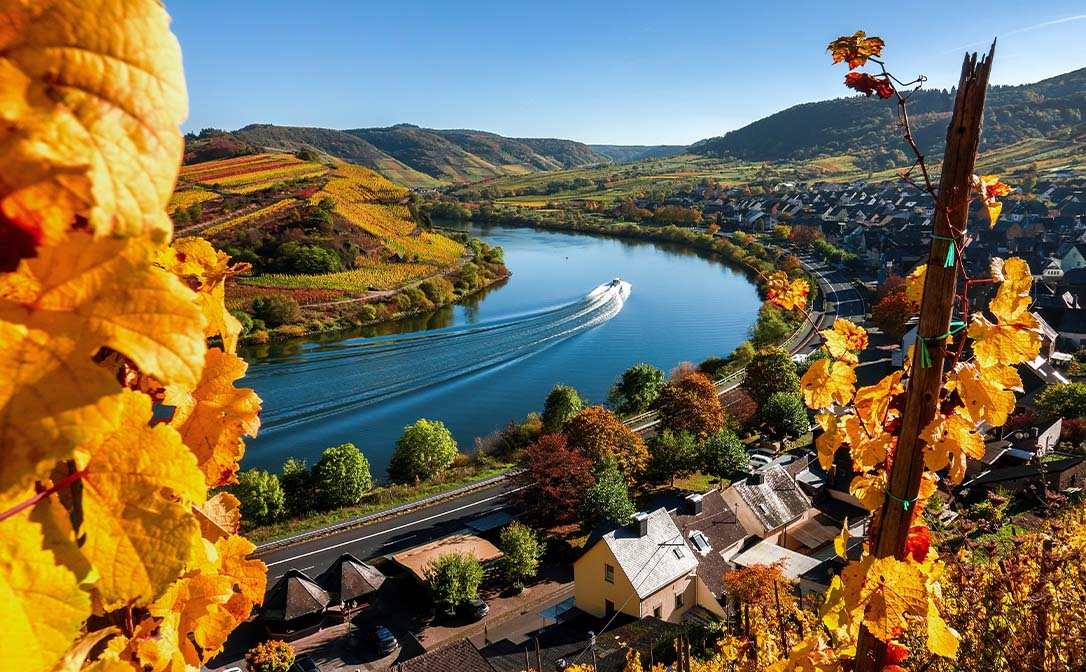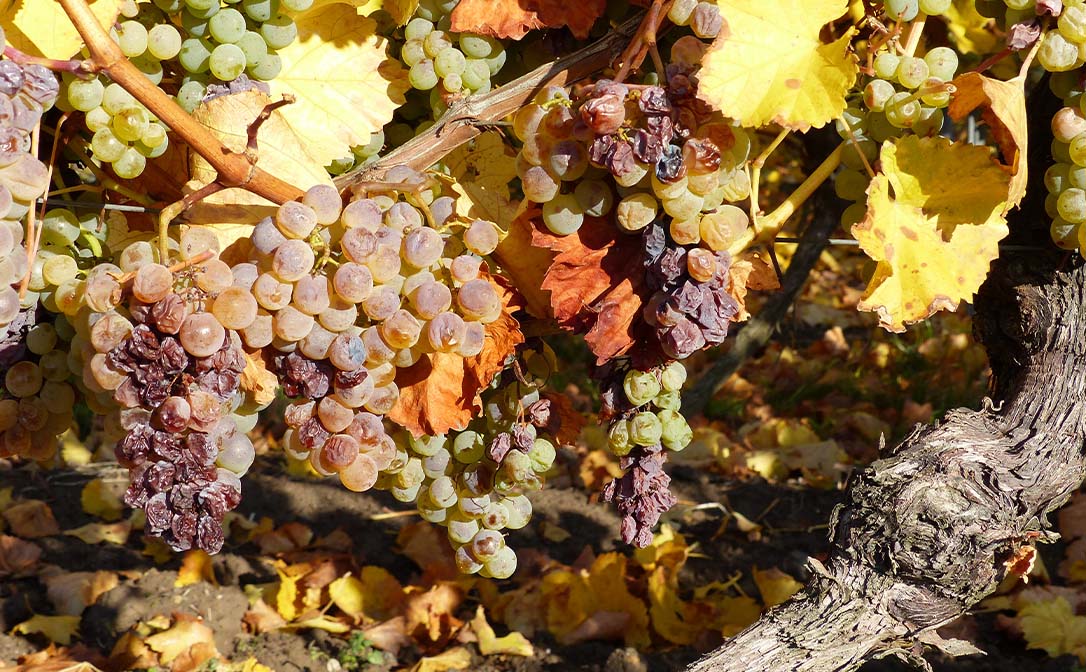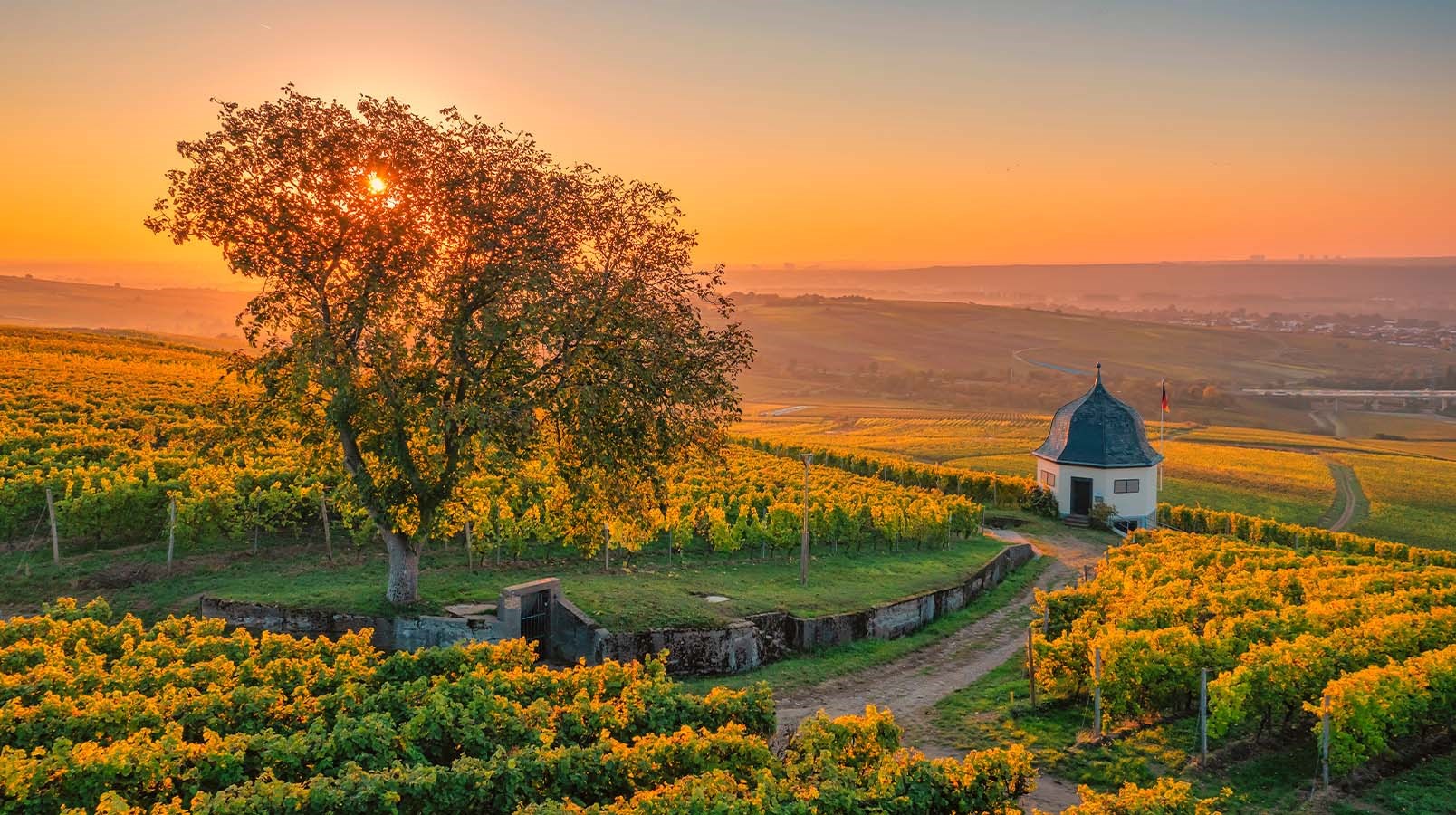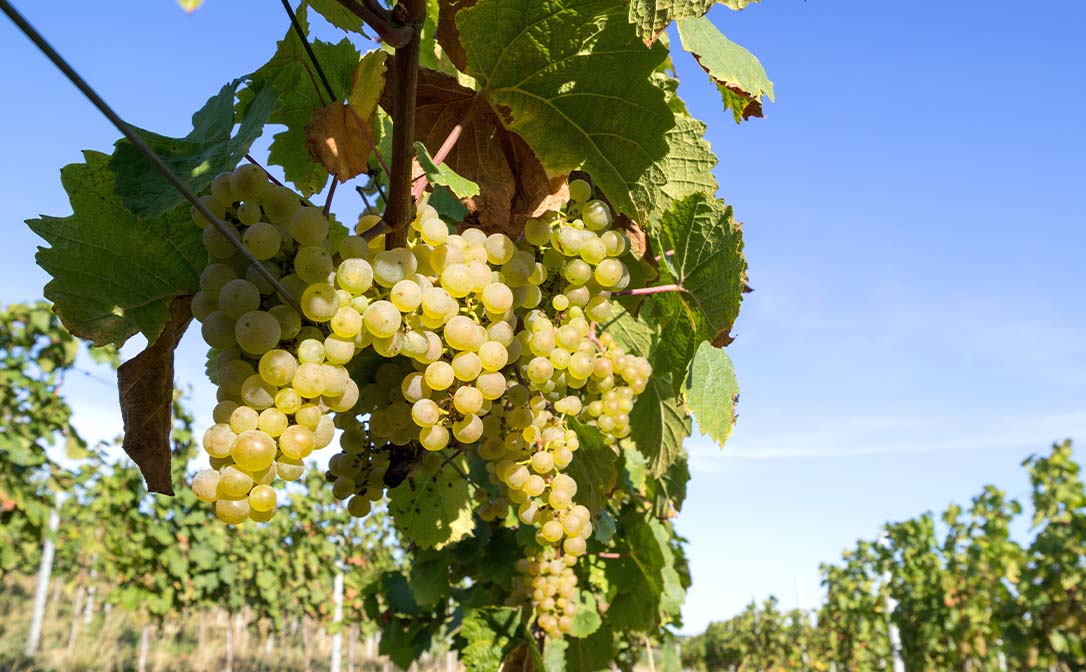Riesling is one of the world's most versatile grape varieties. It has the potential to produce wines that range from completely dry to lusciously sweet, from simple to complex, and from fresh fruit flavours to ripe.
On the vine
Riesling’s natural home is Germany, where it has been documented as having been used to make wines from at least 1435! Many of Germany's wine regions experience a cool climate, with an annual threat of spring frosts. These frosts can damage the young bud of the vine and severely affect both the quality and the quantity of wine produced.
Luckily, Riesling buds late, meaning that the threat of these frosts are minimised, and Riesling can then ripen in the sunny German summer where it develops its distinctive aromatic and perfumed aromas.
If you're keen to look "behind the label", with the Level 2 Award in Wines, you'll gain an understanding of the factors that influence the style and quality of the wines you love and discover new styles and regions. Tap here to find out more.

The Mosel Valley, Germany, in autumn
Riesling, unlike other varieties such as Chardonnay, retains its refreshingly high acidity long into the growing season. This allows it to develop the depth and complexity which makes this wine so unique. In Germany, the growing season can extend into late summer or even autumn.
Producing Riesling wines
The long growing season gives winemakers the choice of when to harvest their grapes based on the style that they want to produce. As these grapes ripen, winemakers must consider two things: flavours and sugars.
As these grapes ripen, they develop from floral (white blossom) and citrus fruit notes (lemon and lime) to stone fruits (peach and nectarine) to eventually ripe tropical notes (pineapple and mango). Typically, the later the grapes are picked, the riper the fruit flavours will be in the wine.
As a grape ripens, it also accumulates sugar. During wine fermentation, yeast eat the sugar and transform it into alcohol. If a winemaker makes a dry wine, all the sugars in the grapes are transformed into alcohol. Usually, more sugars in the grapes = more potential alcohol a wine can have. However, winemakers can choose to stop the fermentation early, when some of the sugar remains unfermented. The resulting wine is low in alcohol (usually under 10% abv) with some sweetness on the palate.
Let’s imagine some grapes are harvested late in the season. They will have flavours of ripe stone and tropical fruit with high levels of sugars in the grapes. The winemaker has several options. On the one hand, they could ferment all the sugar in the grapes, meaning all the sugars turn into alcohol, and the resulting wine is possibly 13% abv and is dry.
On the other hand, they could interrupt the fermentation, which stops the yeast from eating the sugar in the juice [or must], and the wine is 8% abv but has lots of sugar left in the wine, so the wine tastes sweet. It is important to note that this is possible because of the high zesty acidity in Riesling that will remain in both dry and sweet styles of the wine.
Dry or sweet?
This diversity makes Riesling exceptionally exciting, but, equally, can make some consumers exceedingly confused – will this Riesling be dry or sweet? Will the Riesling have more green apple and pear aromas or more tropical pineapple and mango aromas?
One way to determine the sweetness level is by looking at the alcohol content (abv). If it is above 12% it is likely to be dry, and if it is below that it is likely to have some sweetness. In order to help identify whether the wine will have more green or tropical notes, the Germans have created a system of labelling called the Prädikat system. It’s important to note that this system doesn’t apply to all German wines, but nonetheless can be helpful to figure out what the wine might taste like.
The system is based on how much sugar is at harvest and not, it is important to note, on how much sugar is in the final wine. Remember, as we saw above a winemaker can make the wine dry or sweet. The flavours, as we will see below, do change.
- Kabinett: These are wines made from just ripe grapes and will have floral and green apple aromas. Kabinett wines usually have residual sugar in them but may taste dry due to the very high levels of acidity.
- Spätlese: These are late (spät) harvested (lese) grapes, so show riper green fruit and stone fruit notes.
- Auslese: These are selected (aus) harvested (lese) grapes, harvested after Spätlese and show ripe tropical notes of mango and pineapple.
Other sweet Rieslings
Riesling is susceptible to botrytis, or noble rot. This fungus attacks the grapes but instead of making them rotten, it concentrates the sugars, flavours and acids. These exquisite wines have well-defined dried apricot and marmalade aromas and are very sweet.
In Germany, these wines are labelled either Beerenauslese (BA) or Trockenbeerenauslese (TBA). Beerenauselese means individual berries (beeren) with very high levels of sugar are hand-harvested (lese). If the weather conditions are right, these botrytis grapes can be left to hang on the vine for even longer, where they begin to shrivel turning almost into raisins.

Botrytis affected grapes on an old vine
For Trockenbeenenauslese wine, the grapes are further dried and must be affected by botrytis. This drying (trocken) further concentrates the aromas and flavours of the berries (beeren) which are then hand-selected (auslese). This all produces a sweet wine with pronounced dried apricot and marmalade flavours.
Finally, in some years when the conditions for botrytis aren’t right, healthy grapes stay on the vine until December and it may be possible to may Eiswein (Eis, ice). In the cold German winter, the berries eventually freeze and are harvested in the early morning.
The grapes must be picked at below –7°C. They are carefully pressed when still frozen, leaving behind the ice crystals. These wines are usually between 7-10% abv and have a pure Riesling character of intense well-defined tropical mango and pineapple and a sweet palate.
This article was written by Christopher Martin DipWSET.
Keen to take your wine knowledge and tasting skills to the next level? With the WSET Level 3 Award in Wines, you’ll gain a detailed understanding of grape-growing and winemaking, learn to assess wines accurately and use your understanding to confidently explain wine style and quality. Tap here to find out more about this course.
Related content:



